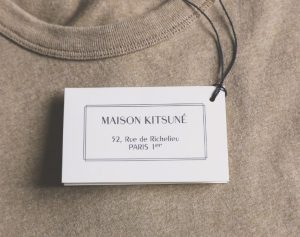Hot foil stamping is a popular practice, one of the most favoured options for foiling services. It’s utilised to improve the appearance of all kinds of materials. To perform this work however, you use a die. This is the tool that moves your foil onto the substrate. Dies can be made from many materials. Each one has its own pros and cons, so you need to choose carefully. The two main choices are magnesium and brass dies. We are going to explore both in detail here.
Brass dies
 Firstly, we have dies made of high quality brass. This is a metal alloy that is mainly zinc and copper. It is famous for its wear resistance, fantastic heat conductivity, and durability. The latter is very important; the metal is so durable the dies can put up with prolonged use without deterioration. This makes them perfect for long print runs where you will use the same die many times.
Firstly, we have dies made of high quality brass. This is a metal alloy that is mainly zinc and copper. It is famous for its wear resistance, fantastic heat conductivity, and durability. The latter is very important; the metal is so durable the dies can put up with prolonged use without deterioration. This makes them perfect for long print runs where you will use the same die many times.
Another advantage of these dies is the detail precision. You can engrave brass with very fine details. So, they are ideal for small text and intricate designs. The precision of brass dies makes certain that even a design’s most delicate elements reproduce accurately.
With the die’s heat conductivity, brass conducts heat efficiently. So, they see to it that the foil is evenly transferred to the substrate. This leads to a consistent and wonderful finish.
Lastly, there is the versatility. You are free to use brass dies on an extensive list of materials. Examples include leather, plastic, and cardboard. Such versatility has resulted in their popularity for hot foil stamping projects. If you need our foiling services, please let us know.
A drawback
As for the downside of using these dies, that would be the cost. Brass tends to be more expensive than magnesium. Saying this, their precision and durability can justify the higher first investment. This is particularly true for high quality, large print runs.
Magnesium dies
These dies are made from a lightweight metal famous for its ease of engraving and affordability. They work for less intricate designs and shorter print runs.
One advantage of magnesium dies is the cost efficiency. They aren’t as expensive to produce as brass ones are. So, they work well if you are on a tight budget.
Quick production is another benefit. Magnesium is simpler to engrave if you compare to brass. This allows for quicker production times. If you are on a tight deadline, this will be the most advantageous choice.
Lastly, these dies are lightweight. As a result, they are simple to handle and install. That can offer big benefits for operators and foiling services providers, putting less physical strain on them and their equipment.
Some disadvantages
Then we have the disadvantages of magnesium dies. One of them is durability. These dies aren’t as durable as brass ones are. They wear out more rapidly, particularly under long print or high pressure runs.
Another drawback is detail limitations. Magnesium dies aren’t as capable of working with fine details as brass dies are. You are better off using them for larger text and simpler designs.
Which will work best for you?
As you can see, each individual material has its own distinct advantages and restrictions. This makes them appropriate for separate applications. Choosing the right die will enable your hot foil stamping project to be both effective and efficient. The result will be professional and stunning finishes.
You can’t argue with the results of our foiling services
At Foiling Services, the work we do can produce outstanding results. We are incredibly creative, offering a wide choice of colours, patterns, and finishes. We can succeed for you, delivering products you will appreciate.
So, contact us today if you are after the best foiling services around. We can provide fantastic solutions for any project.
